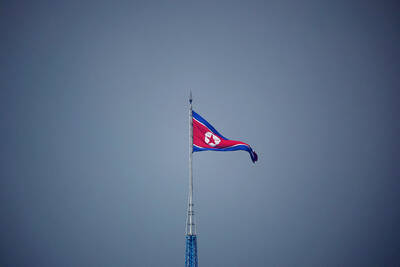Nations from India to Kazakhstan are far more dependent on melting glaciers for water than previously thought, particularly in summer droughts, scientists said on Wednesday, warning that rising temperatures were threatening supply.
Each summer, the 95,000 glaciers in the mountain region spanning from Kyrgyzstan’s Alai range to the Himalayas produce enough meltwater to support 221 million people, researchers at the British Antarctic Survey calculated.
That provides a crucial buffer against droughts, when rains fail and reserves are strained, according to the study which was published in the journal Nature.
However, such protection is under threat as ice caps shrink under rising global temperatures, threatening the region, said Hamish Pritchard, the study’s author.
“If we lose the glaciers, then we lose that protection from drought,” Pritchard said.
At least a third of the ice in the Himalayas and the Hindu Kush is to thaw by 2100, even if governments take tough action to limit global warming under the 2015 Paris climate agreement, a separate study found in February.
When drought hits, ice melt from those mountains — often referred to as the “third pole” — can account for up to 100 percent of the water in some of Asia’s main rivers, Pritchard said.
This water flow is expected to grow in the coming years as more of the ice melts, but would then start to decline toward the end of the century as the glaciers retreat — something that would exacerbate droughts, he said.
Droughts are already affecting people’s access to drinking water, food production and electricity generation across the region, said Luo Tianyi, senior manager for water risks at the World Resources Institute, a think tank.
“Water demand is also expected to grow significantly over the coming decades ... due to growing population, and food and energy demand,” Luo said. “If the demand is going up, but supply is going down, already stressed water resources is going to be even more scarce.”
The effects could be particularly severe in drought-prone regions with arid summers, such as the Aral basin in Central Asia, potentially forcing people to migrate or straining relations between nations that share a river, Pritchard said.
“As the climate crisis increases pressure on already scarce water supplies, the impacts will be felt most severely by those with least access to clean water, threatening their health and livelihoods,” said Jonathan Farr, policy analyst at the charity WaterAid. “It is the poorest communities who are paying the price for the world’s failure to act.”

‘HYANGDO’: A South Korean lawmaker said there was no credible evidence to support rumors that Kim Jong-un has a son with a disability or who is studying abroad South Korea’s spy agency yesterday said that North Korean leader Kim Jong-un’s daughter, Kim Ju-ae, who last week accompanied him on a high-profile visit to Beijing, is understood to be his recognized successor. The teenager drew global attention when she made her first official overseas trip with her father, as he met with Chinese President Xi Jinping (習近平) and Russian President Vladimir Putin. Analysts have long seen her as Kim’s likely successor, although some have suggested she has an older brother who is being secretly groomed as the next leader. The South Korean National Intelligence Service (NIS) “assesses that she [Kim Ju-ae]

In the week before his fatal shooting, right-wing US political activist Charlie Kirk cheered the boom of conservative young men in South Korea and warned about a “globalist menace” in Tokyo on his first speaking tour of Asia. Kirk, 31, who helped amplify US President Donald Trump’s agenda to young voters with often inflammatory rhetoric focused on issues such as gender and immigration, was shot in the neck on Wednesday at a speaking event at a Utah university. In Seoul on Friday last week, he spoke about how he “brought Trump to victory,” while addressing Build Up Korea 2025, a conservative conference

DEADLOCK: Putin has vowed to continue fighting unless Ukraine cedes more land, while talks have been paused with no immediate results expected, the Kremlin said Russia on Friday said that peace talks with Kyiv were on “pause” as Ukrainian President Volodymyr Zelenskiy warned that Russian President Vladimir Putin still wanted to capture the whole of Ukraine. Meanwhile, US President Donald Trump said that he was running out of patience with Putin, and the NATO alliance said it would bolster its eastern front after Russian drones were shot down in Polish airspace this week. The latest blow to faltering diplomacy came as Russia’s army staged major military drills with its key ally Belarus. Despite Trump forcing the warring sides to hold direct talks and hosting Putin in Alaska, there

North Korea has executed people for watching or distributing foreign television shows, including popular South Korean dramas, as part of an intensifying crackdown on personal freedoms, a UN human rights report said on Friday. Surveillance has grown more pervasive since 2014 with the help of new technologies, while punishments have become harsher — including the introduction of the death penalty for offences such as sharing foreign TV dramas, the report said. The curbs make North Korea the most restrictive country in the world, said the 14-page UN report, which was based on interviews with more than 300 witnesses and victims who had